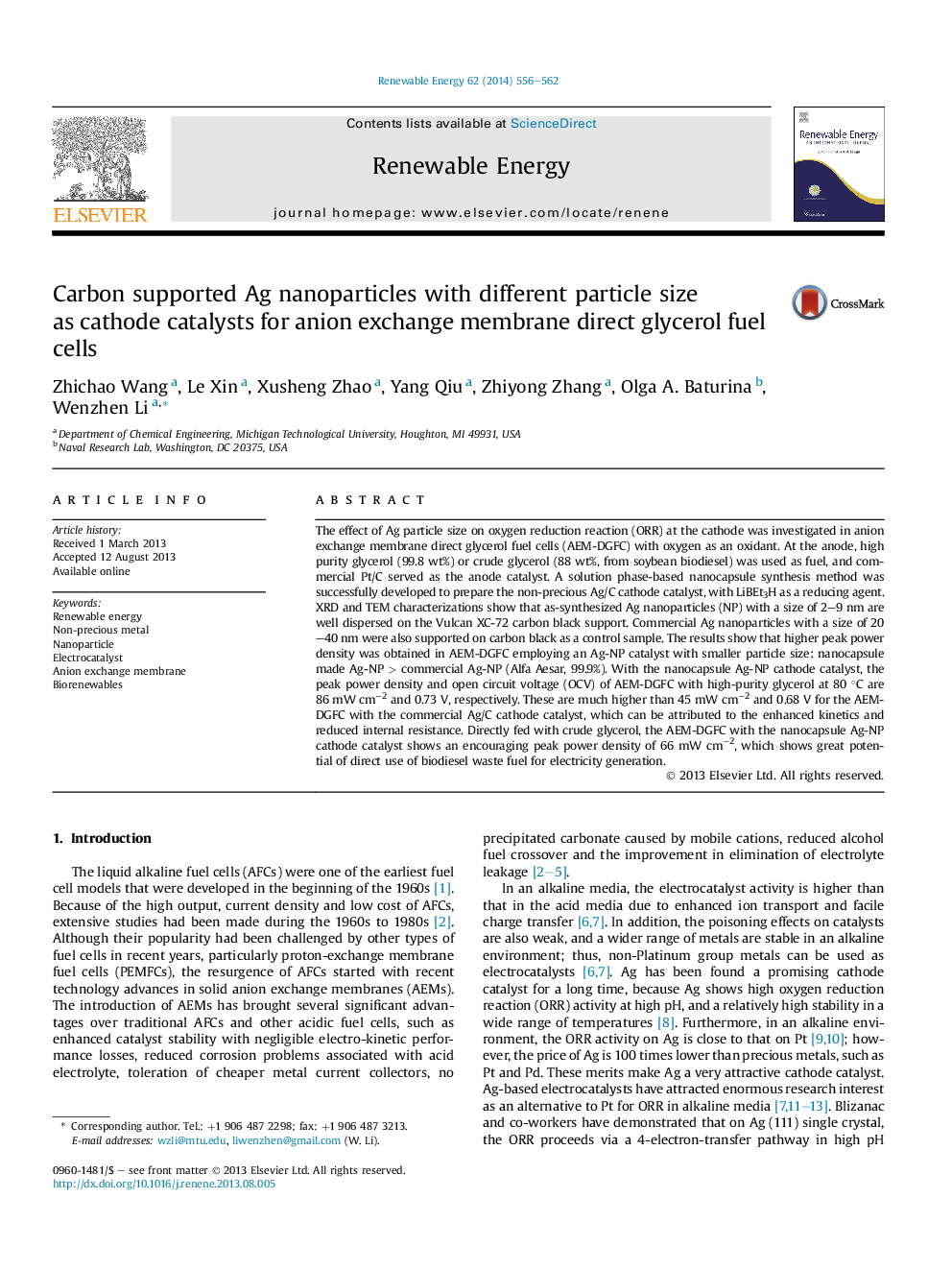| Article ID | Journal | Published Year | Pages | File Type |
|---|---|---|---|---|
| 6769280 | Renewable Energy | 2014 | 7 Pages |
Abstract
The effect of Ag particle size on oxygen reduction reaction (ORR) at the cathode was investigated in anion exchange membrane direct glycerol fuel cells (AEM-DGFC) with oxygen as an oxidant. At the anode, high purity glycerol (99.8 wt%) or crude glycerol (88 wt%, from soybean biodiesel) was used as fuel, and commercial Pt/C served as the anode catalyst. A solution phase-based nanocapsule synthesis method was successfully developed to prepare the non-precious Ag/C cathode catalyst, with LiBEt3H as a reducing agent. XRD and TEM characterizations show that as-synthesized Ag nanoparticles (NP) with a size of 2-9 nm are well dispersed on the Vulcan XC-72 carbon black support. Commercial Ag nanoparticles with a size of 20-40 nm were also supported on carbon black as a control sample. The results show that higher peak power density was obtained in AEM-DGFC employing an Ag-NP catalyst with smaller particle size: nanocapsule made Ag-NP > commercial Ag-NP (Alfa Aesar, 99.9%). With the nanocapsule Ag-NP cathode catalyst, the peak power density and open circuit voltage (OCV) of AEM-DGFC with high-purity glycerol at 80 °C are 86 mW cmâ2 and 0.73 V, respectively. These are much higher than 45 mW cmâ2 and 0.68 V for the AEM-DGFC with the commercial Ag/C cathode catalyst, which can be attributed to the enhanced kinetics and reduced internal resistance. Directly fed with crude glycerol, the AEM-DGFC with the nanocapsule Ag-NP cathode catalyst shows an encouraging peak power density of 66 mW cmâ2, which shows great potential of direct use of biodiesel waste fuel for electricity generation.
Keywords
Related Topics
Physical Sciences and Engineering
Energy
Renewable Energy, Sustainability and the Environment
Authors
Zhichao Wang, Le Xin, Xusheng Zhao, Yang Qiu, Zhiyong Zhang, Olga A. Baturina, Wenzhen Li,
